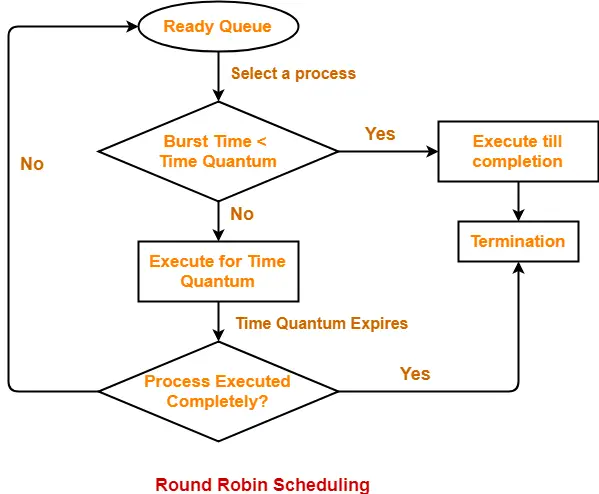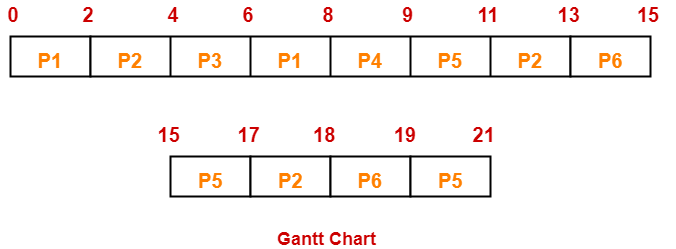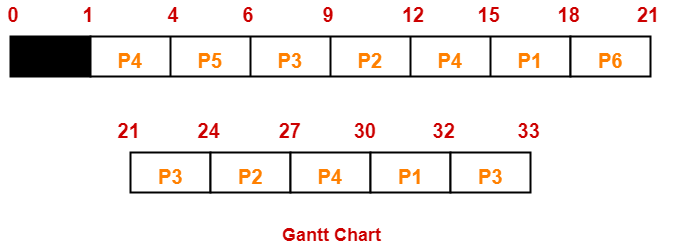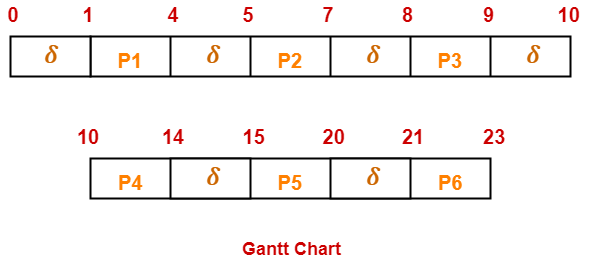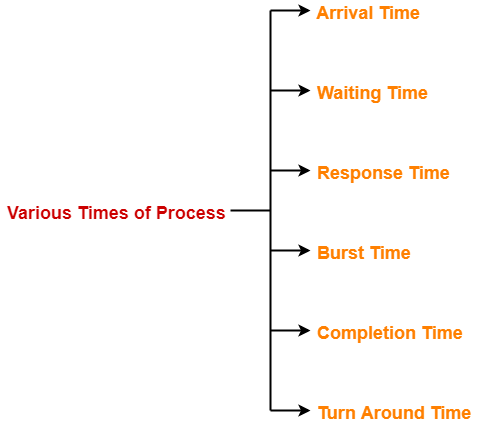Priority Scheduling-
In Priority Scheduling,
- Out of all the available processes, CPU is assigned to the process having the highest priority.
- In case of a tie, it is broken by FCFS Scheduling.

- Priority Scheduling can be used in both preemptive and non-preemptive mode.
Advantages-
- It considers the priority of the processes and allows the important processes to run first.
- Priority scheduling in preemptive mode is best suited for real time operating system.
Disadvantages-
- Processes with lesser priority may starve for CPU.
- There is no idea of response time and waiting time.
Important Notes-
Note-01:
- The waiting time for the process having the highest priority will always be zero in preemptive mode.
- The waiting time for the process having the highest priority may not be zero in non-preemptive mode.
Note-02:
Priority scheduling in preemptive and non-preemptive mode behaves exactly same under following conditions-
- The arrival time of all the processes is same
- All the processes become available
PRACTICE PROBLEMS BASED ON PRIORITY SCHEDULING-
Problem-01:
Consider the set of 5 processes whose arrival time and burst time are given below-
| Process Id | Arrival time | Burst time | Priority |
| P1 | 0 | 4 | 2 |
| P2 | 1 | 3 | 3 |
| P3 | 2 | 1 | 4 |
| P4 | 3 | 5 | 5 |
| P5 | 4 | 2 | 5 |
If the CPU scheduling policy is priority non-preemptive, calculate the average waiting time and average turn around time. (Higher number represents higher priority)
Solution-
Gantt Chart-

Now, we know-
- Turn Around time = Exit time – Arrival time
- Waiting time = Turn Around time – Burst time
Also read- Various Times of Process
| Process Id | Exit time | Turn Around time | Waiting time |
| P1 | 4 | 4 – 0 = 4 | 4 – 4 = 0 |
| P2 | 15 | 15 – 1 = 14 | 14 – 3 = 11 |
| P3 | 12 | 12 – 2 = 10 | 10 – 1 = 9 |
| P4 | 9 | 9 – 3 = 6 | 6 – 5 = 1 |
| P5 | 11 | 11 – 4 = 7 | 7 – 2 = 5 |
Now,
- Average Turn Around time = (4 + 14 + 10 + 6 + 7) / 5 = 41 / 5 = 8.2 unit
- Average waiting time = (0 + 11 + 9 + 1 + 5) / 5 = 26 / 5 = 5.2 unit
Problem-02:
Consider the set of 5 processes whose arrival time and burst time are given below-
| Process Id | Arrival time | Burst time | Priority |
| P1 | 0 | 4 | 2 |
| P2 | 1 | 3 | 3 |
| P3 | 2 | 1 | 4 |
| P4 | 3 | 5 | 5 |
| P5 | 4 | 2 | 5 |
If the CPU scheduling policy is priority preemptive, calculate the average waiting time and average turn around time. (Higher number represents higher priority)
Solution-
Gantt Chart-

Now, we know-
- Turn Around time = Exit time – Arrival time
- Waiting time = Turn Around time – Burst time
| Process Id | Exit time | Turn Around time | Waiting time |
| P1 | 15 | 15 – 0 = 15 | 15 – 4 = 11 |
| P2 | 12 | 12 – 1 = 11 | 11 – 3 = 8 |
| P3 | 3 | 3 – 2 = 1 | 1 – 1 = 0 |
| P4 | 8 | 8 – 3 = 5 | 5 – 5 = 0 |
| P5 | 10 | 10 – 4 = 6 | 6 – 2 = 4 |
Now,
- Average Turn Around time = (15 + 11 + 1 + 5 + 6) / 5 = 38 / 5 = 7.6 unit
- Average waiting time = (11 + 8 + 0 + 0 + 4) / 5 = 23 / 5 = 4.6 unit
To gain better understanding about Priority Scheduling,
Next Article- Practice Problems On CPU Scheduling Algorithms
Get more notes and other study material of Operating System.
Watch video lectures by visiting our YouTube channel LearnVidFun.
